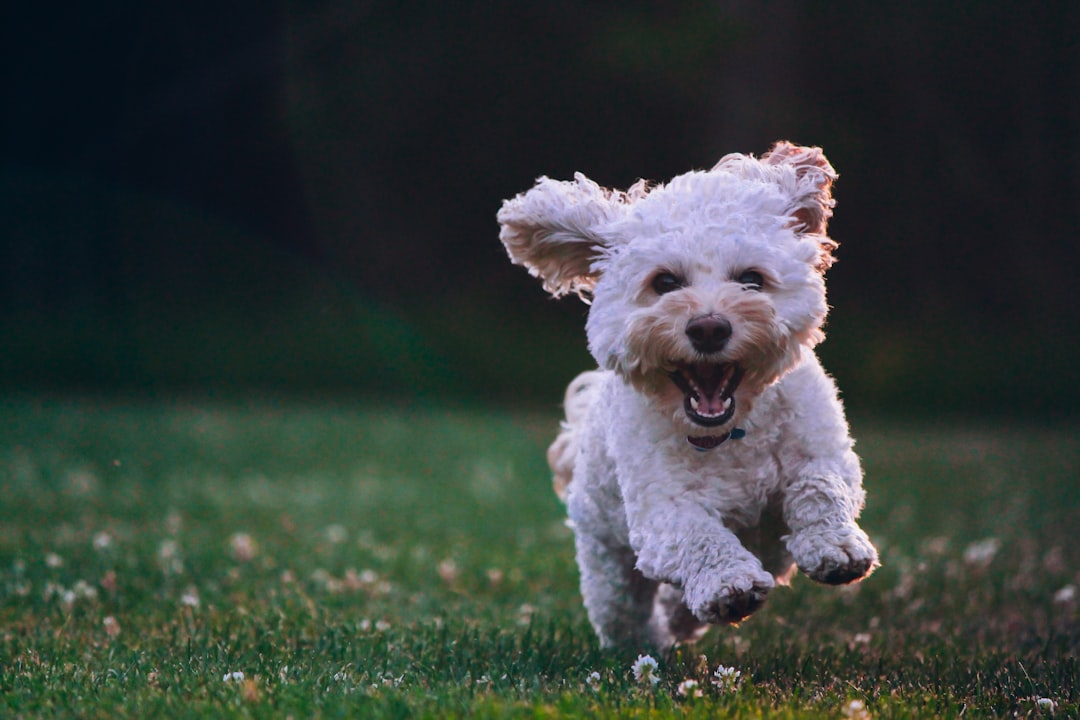Training Your Pup: Mastering the Top 10 Essential Dog Commands
Learn the top 10 commands every dog should know, including Sit, Stay, Come, Down, Heel, Leave It, and more, to establish obedience, enhance behavior, and ensure the safety and happiness of your furry friend.
Introduction to Dog Training Essentials
Initiating a journey into dog training begins with laying down a foundation of obedience commands that are pivotal in forging a robust and enduring connection between dogs and their owners. This formative step is not just about teaching a dog new tricks; it’s about instilling a language of respect and understanding that transcends the basic need for control. Proper training is instrumental in ensuring a dog’s safety across a myriad of environments, from the tranquility of a home setting to the unpredictability of outdoor spaces. Moreover, it significantly bolsters their social etiquette, making interactions with humans and other dogs more harmonious and enjoyable.
The essence of obedience training transcends mere behavior correction; it plays a critical role in averting potential behavioral issues that could strain the dog-owner relationship. By integrating essential commands into a dog’s daily routine, owners are equipped to navigate and mitigate situations that might otherwise lead to stress or danger for their pets. The impact of such training on the overall happiness and well-being of both dogs and their owners is profound. It creates a shared language that enhances communication, deepens the bond, and promotes a sense of security and trust. This mutual understanding is the cornerstone of a healthy and fulfilling relationship that enriches the lives of dogs and their human companions alike.
The Command “Sit”
Mastering the “Sit” command is a crucial step in establishing control and enhancing the behavior of dogs in various scenarios. This command not only aids in daily routines like calmly greeting guests or waiting for meals but also lays the groundwork for advanced obedience training. The effectiveness of the “Sit” command in managing a dog’s impulses is evident in situations where calmness is required. For instance, a dog that can sit on command is less likely to jump on visitors or dash towards the door, showcasing the command’s utility in promoting good manners and safety.
Teaching a dog to sit is often one of the first training milestones due to its simplicity and the dog’s ability to learn it relatively quickly. Using positive reinforcement, such as treats, praise, or clicker training, makes learning this command a fun and rewarding experience for the dog. A dog that responds reliably to the “Sit” command is easier to manage and demonstrates the successful beginning of a training journey. For owners looking to build on this foundational skill, professional training programs, such as those offered by Off Leash K9 Training of Hampton Roads, can provide tailored guidance and support. These programs emphasize the importance of positive reinforcement and can help owners and their dogs achieve higher levels of obedience and understanding. To explore how professional training can further enhance your dog’s obedience, visit https://hamptonroadsdogtrainers.com/ for more information.
The Command “Stay”
Mastering the “Stay” command is a fundamental aspect of a dog’s training regimen, equipping them with the essential skill of self-control in various situations. By learning to adhere to the “Stay” command, dogs develop the ability to maintain composure and stay put amidst distractions or potential hazards. This skill is particularly crucial in environments where it’s imperative for a dog to remain stationary for safety or procedural reasons, such as during veterinary visits, grooming sessions, or even at busy intersections. For instance, commanding a dog to “Stay” at the edge of a sidewalk prevents them from darting into traffic, thereby preventing accidents and ensuring their safety.
To effectively teach the “Stay” command, a gradual and rewarding approach is recommended. Starting with the dog in a comfortable and familiar environment, the trainer issues the “Stay” command with a clear and firm voice, initially maintaining close physical proximity to the dog. Over time, as the dog begins to understand and comply with the command, the distance between them and the trainer is incrementally increased. Simultaneously, introducing various levels of distractions helps reinforce the dog’s ability to stay put under different circumstances. Rewards, whether in the form of treats, praise, or physical affection, serve as positive reinforcement, solidifying the dog’s understanding and compliance with the “Stay” command. This methodical approach not only enhances the effectiveness of the command but also strengthens the bond between the dog and its owner, fostering a relationship built on trust and mutual respect.
The Command “Come”
The command “Come” is indispensable for dog owners, serving as an essential tool for recall that can swiftly ensure a dog’s safety and maintain control in situations where they’re off-leash. Establishing a strong, positive association with the “Come” command is key to reinforcing this critical behavior. By making the act of returning to their owner a highly rewarding experience—whether through the use of favorite treats, affection, or playtime—dogs learn to associate the command with positive outcomes. For example, when a dog is called back in a bustling environment like a park and immediately rewarded upon returning, the reinforcement of this action significantly bolsters their recall capability, making them more likely to respond promptly in the future [1].
Furthermore, the effectiveness of the “Come” command is greatly enhanced through consistent and varied practice. Training sessions that take place in different environments and under various levels of distraction help dogs understand that the command applies universally, not just in the quiet of their home or yard. This variety in training scenarios aids in generalizing the behavior, ensuring that the dog’s response to the command becomes reliable and swift, regardless of the surrounding conditions. Such consistent practice not only enhances the dog’s safety but also enriches the bond between the dog and the owner, instilling a sense of trust and understanding that is fundamental to their relationship [2].
The Command “Down”
The “Down” command is not just a foundational aspect of obedience training, but it serves as a practical tool for managing a dog’s behavior in various settings, especially in situations that demand calmness and submission. For instance, teaching your dog to respond to the “Down” command can be incredibly useful in bustling environments like crowded parks or during family gatherings. This command helps in keeping your dog grounded and prevents over-excitement, which could lead to jumping on guests or knocking over items. Imagine a scenario where you’re hosting a dinner party, and the ability to have your dog calmly lie down away from the dining area can be invaluable, ensuring a pleasant experience for everyone involved.
Moreover, the process of teaching the “Down” command involves positive reinforcement strategies that not only foster a deeper bond between the dog and its owner but also significantly improve the dog’s impulse control and patience. Using treats, praise, or toys to reward the dog for successfully following the command encourages them to view the training as a positive and rewarding experience. This technique not only makes the learning process faster but also more enjoyable for the dog. Furthermore, the “Down” command lays the groundwork for more advanced training exercises, as it teaches dogs to stay in one position until released, a skill that can be beneficial in numerous real-life situations. For those who find the training process challenging or wish to ensure their dog masters this essential command, professional assistance from experienced trainers, such as those at Off Leash K9 Training of Hampton Roads, can be invaluable. Their expertise can help streamline the training process and address any specific behavioral issues, making the training journey smoother and more effective. Discover more about how they can assist in enhancing your dog’s obedience by visiting https://hamptonroadsdogtrainers.com/.
The Command “Heel”
Mastering the “Heel” command is a cornerstone of having enjoyable and safe walks with your dog. This command instructs your dog to walk closely beside you, not ahead or behind, ensuring that they match your pace and direction. The benefits of a well-trained “Heel” command extend beyond mere convenience; it is about establishing a mutual respect and understanding between you and your dog. Dogs that reliably respond to the “Heel” command are less likely to pull on the leash or get distracted by their surroundings, making every walk a pleasure rather than a struggle. This is especially important in potentially hazardous situations, such as walking near busy streets or in areas with many distractions like parks or urban centers.
Incorporating advanced heel training techniques can significantly improve the effectiveness of this command. These methods may involve using a combination of verbal cues and leash corrections to guide your dog’s behavior, as well as rewarding them for correct positioning. Practicing in a variety of environments is crucial to help your dog generalize the command, ensuring that they respond to “Heel” whether they’re in a quiet neighborhood or a bustling city street. For instance, a dog that can heel through a crowded market without lunging at distractions or pulling towards interesting smells demonstrates a high level of obedience and control. Moreover, professional training programs, such as those offered by Off Leash K9 Training of Hampton Roads, can provide personalized guidance to address your dog’s specific training needs, making the journey towards perfecting the “Heel” command both efficient and enjoyable. Explore how Off Leash K9 Training of Hampton Roads can assist in enhancing your dog’s leash manners by visiting https://hamptonroadsdogtrainers.com/.
The Command “Leave It”
Mastering the “Leave It” command is a cornerstone in ensuring the safety of our canine companions, particularly in safeguarding them from the myriad of potentially dangerous situations they may encounter. This command is not just about preventing dogs from picking up unwanted items; it’s a vital tool for teaching them to actively disengage from objects, foods, or substances that could pose a risk to their health or well-being. For instance, imagine a scenario where a dog comes across a piece of chocolate during a walk—an item toxic to dogs. A well-taught “Leave It” command would prompt the dog to ignore the chocolate and instead look to its owner for guidance and reward, thus averting a potential health crisis.
Training a dog to reliably heed the “Leave It” command involves a methodical approach where the dog learns to associate ignoring the specified item with a positive outcome, typically in the form of high-value treats or verbal praise. This learning process not only diverts their attention away from the temptation but also strengthens the dog’s impulse control and decision-making capabilities. By consistently practicing this command in various settings and with different temptations, dogs gradually learn to generalize this behavior, making it a versatile tool in their obedience repertoire. Whether it’s avoiding a hazardous object on the sidewalk or resisting the urge to snatch a tempting morsel off the kitchen counter, the “Leave It” command empowers dogs to make safer choices autonomously.
Additional Essential Commands
- Drop It: This command is crucial for ensuring a dog releases something potentially dangerous or valuable that they’ve picked up. It promotes safe play and interaction, especially crucial when a dog picks up something harmful.
- Wait: Teaching patience and self-control, the “Wait” command is useful at doors, during meal times, or before crossing streets, enhancing both safety and manners.
- Off: The “Off” command is vital for preventing jumping on people or furniture, helping establish clear boundaries and polite behavior.
- Quiet: Managing excessive barking is where the “Quiet” command comes into play, teaching dogs to cease vocalizing on cue, crucial for maintaining peace and neighborly relations.
Advanced Training Techniques and Tips
Integrating obedience training into your daily life with your dog can have profound impacts on your relationship and their behavior. By making training a regular part of interactions, you’re not only reinforcing desired behaviors but also deepening the bond with your pet. This approach ensures that commands like “sit,” “stay,” and “come” become second nature to them, woven into the fabric of their daily routines. For instance, asking your dog to “sit” before meals or “stay” when you open the front door are practical applications that reinforce training in real-world scenarios.
To keep your dog motivated and engaged, utilizing a variety of rewards is key. Dogs have their own unique preferences, and what works for one may not work for another. Some dogs may be driven by food treats, while others might find a favorite toy or verbal praise more rewarding. The goal is to make the learning process enjoyable and rewarding for them, ensuring they associate obedience with positive outcomes. Additionally, keeping training sessions short and consistent is crucial. Dogs, much like humans, can lose focus and interest if sessions are too lengthy or infrequent. Short, daily sessions ensure that your dog remains interested and retains the information better, making the training process more efficient and enjoyable for both of you. For those seeking to further enhance their dog’s training, professional trainers, such as those at Off Leash K9 Training of Hampton Roads, offer customized programs that can address specific needs and accelerate the learning process. Discover more about how they can help at https://hamptonroadsdogtrainers.com/.
The Role of Professional Dog Trainers
The journey of dog training is often a complex process that necessitates a nuanced understanding of canine behavior, something that professional dog trainers are adept at. For instance, the team at Off Leash K9 Training of Hampton Roads specializes in creating personalized training strategies that cater to the unique temperament and learning pace of each dog. Their expertise extends to resolving specific behavioral challenges, such as excessive barking or leash pulling, using methods that have been refined through years of practice. By employing a blend of positive reinforcement and advanced training techniques, these professionals ensure that dogs not only learn the commands but also understand the expected behavior in various situations.
Moreover, working with professional trainers like those at Off Leash K9 Training of Hampton Roads offers an invaluable benefit for dog owners too. It’s not just about teaching dogs; it’s about educating owners on how to effectively communicate with their pets, fostering a deeper bond between them. Trainers provide insights into why dogs act the way they do and how to respond appropriately, thereby enabling owners to continue effective training and behavior management long after the formal sessions have ended. This comprehensive approach ensures that the benefits of training extend far beyond mastering basic commands, contributing to a harmonious living situation and a lasting relationship between dogs and their owners. For personalized training programs that cater to the specific needs of your canine companion, exploring what Off Leash K9 Training of Hampton Roads has to offer is a step in the right direction. Visit https://hamptonroadsdogtrainers.com/ for more details on how you can begin this transformative journey with your dog.
Conclusion: Ensuring Obedience and Safety
Achieving proficiency in the top 10 commands every dog should know marks a significant milestone in the journey of dog ownership. This mastery is not just about teaching your dog new tricks; it’s about fostering a deep-seated bond between you and your furry friend, ensuring their safety, and enhancing their overall quality of life. A dog that responds promptly to commands such as “sit,” “stay,” and “come” is more manageable, safer in potentially hazardous situations, and generally more pleasant to be around. This level of training opens up a world of possibilities for social interaction, reduces the stress of managing your pet in public spaces, and contributes to a harmonious home environment.
For those seeking to achieve this level of obedience and beyond, professional guidance can be invaluable. Off Leash K9 Training of Hampton Roads specializes in crafting personalized training programs that cater to the unique needs of each dog and owner. Their experienced trainers employ proven techniques to address a wide range of behavioral issues and training goals, from basic obedience to advanced skills. By opting for professional training, you not only expedite the learning process but also ensure that the training is effective, consistent, and tailored to your and your dog’s lifestyle. Embark on your training journey with Off Leash K9 Training of Hampton Roads by visiting their website at https://hamptonroadsdogtrainers.com/ for more details, and take the first step towards nurturing a well-behaved, obedient, and safe canine companion.













